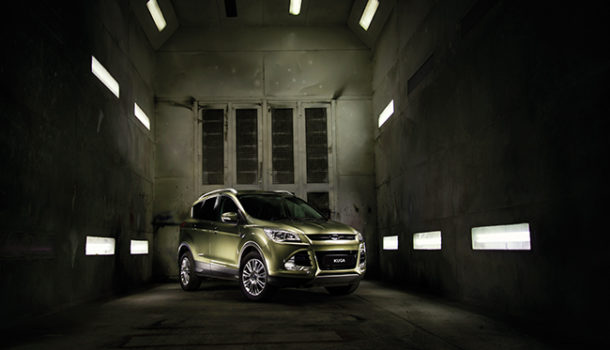Entrusted with a Ford Kuga for a months-long driving experience, AA traveller editor Mark Samuel discovers there’s much more to this SUV than he first expected
This car knows when I’m about to take a sharp turn across an intersection and, unprompted, deactivates its cunning stop-start function. Effortlessly, I can open or close the tailgate with a double-press of a button on the key fob, or by wafting my foot underneath the rear bumper if my hands are loaded with luggage. With said key in my pocket, I simply place my hand on any door handle and the car magically unlocks. And, while driving in bumper-to-bumper traffic, the auto-start-stop function saves fuel and money (not to mention the planet), one stop at a time.
I’ve been driving this range-topping Ginger Ale-coloured Kuga (though it looks greenish to me), on loan from Ford, for a number of months now, affording me unique insight into this fine machine’s inner workings. It’s the kind of insight that a quick test drive wouldn’t reveal, and I can now say with conviction: the Kuga is designed with the driver in mind, and the passengers.
‘But aren’t all cars?’ I can hear you snicker. No, they’re not. Not in the ways I’ve experienced with my Kuga. Okay, it isn’t mine, but I’m hoping if I keep quiet for long enough, Ford will forget they’ve lent it to me.
And don’t misinterpret my motives. I am under no obligation to give this eager SUV a favourable rating. But it’s difficult to criticise. If anything, I could point out that the aesthetics are loved by some, scoffed at by others. A friend’s wife says it looks like an oversized door-stop. I am less than convinced. Also, the low-profile tyres will handle gravel roads, no problem – in keeping with the car’s all-wheel-drive capabilities – but, if the rocks get too large or the potholes too deep, I’d be concerned about damaging the rims or getting a puncture. There’s not a whole lot of rubber there.
It’s ‘eager’ because of its punchy 2.0l turbo-diesel engine. A whopping 400 Nm of torque kicks in at a lowly 2 000 – 3 250 rpm, and peak power of 132 kW is achieved at 3 750 rpm. This leaves you wanting for nothing when overtaking, no matter the gradient. Or flick on the cruise control, found to the bottom left of the steering wheel, and highway coasting becomes a doddle.
A feature that makes life even easier is when you chat up your Kuga: push a button with your right thumb and SYNC is activated, letting you use voice commands for a variety of functions, such as making a call on your paired phone or choosing an audio option.
I’ve filled up and emptied several tanks of diesel during my travels with my Kuga and using the lightest of light right feet, from full to ‘fumes of an oil rag’, I have never achieved better than 6.7 l/100 km.
Ford’s website claims notably better figures, with a combined urban and extra-urban average of 5.4 l/100 km. Certainly, 6.7 is very good, but I can’t picture a scenario in reality in which 5.4 is achieved. Nevertheless, ask the attendant to top up the 60l tank to the brim and you’ll easily cover more than 800 km.
Electric seat warmers have always made me feel like I’ve wet my pants… That is, until a Cape Town winter struck during my time with this car. Let me tell you, there are few things cosier than the warm embrace of a heated driver’s seat while headed to evening sports training in the rain. And then being cradled by the selfsame seat when climbing shivering into the car afterwards. Both upfront seats have them – with five temperature settings and all.
The all-round drive is, well, sublime. Throw in the roof rails, which can pair with a selection of racks, and the ability to fold flat the 60:40-split rear seats to create a colossal amount of stowage space – along with the Kuga’s all-wheel-drive capabilities – and you’ve got an ultra-versatile road-trip ally that will get you to most outdoor adventure spots in style. Interior mood lighting completes that package, along with the 230V/150W power converter for charging.
What more could you want from a striking SUV?
Photography Henrie Snyman
(This article was first published in the spring 2015 issue of AA traveller magazine)




